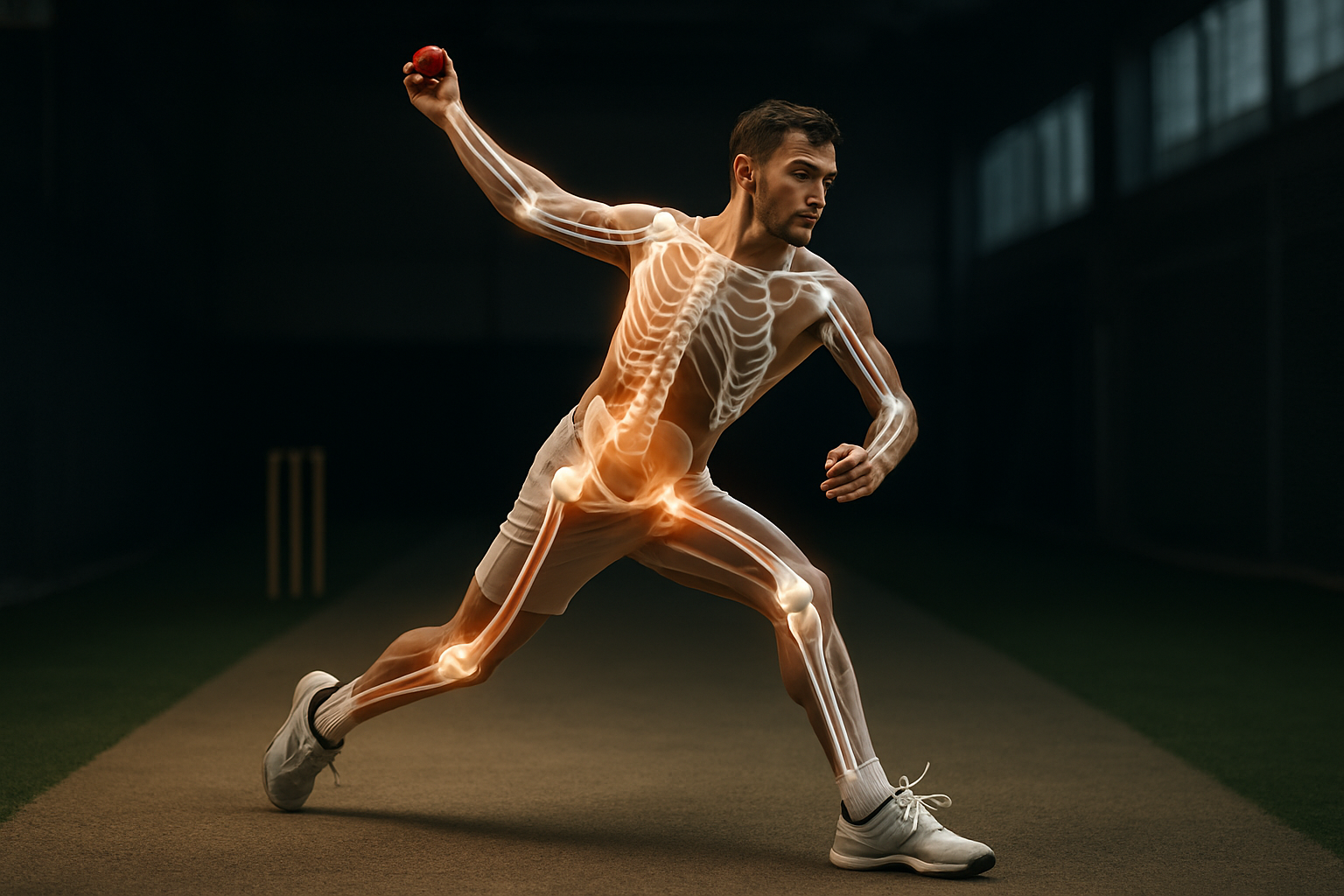Biomimicry in Sports Equipment Design
Harnessing nature's ingenuity to revolutionize athletic gear, biomimicry in sports equipment design is transforming how athletes perform. From shark skin-inspired swimsuits to gecko-like climbing shoes, this innovative approach is pushing the boundaries of human potential. As we delve into this fascinating field, we'll explore how scientists and engineers are turning to the natural world to create cutting-edge sports technology that's changing the game for athletes across disciplines.

The Origins of Biomimicry in Sports
The concept of biomimicry in sports can be traced back to the early 20th century when inventors began to look at nature for inspiration. One of the earliest examples is the invention of Velcro in 1941 by Swiss engineer George de Mestral. Inspired by the way burrs stuck to his dog’s fur during a hunting trip, de Mestral created the hook-and-loop fastener that would later become ubiquitous in sports attire and equipment.
However, it wasn’t until the late 20th and early 21st centuries that biomimicry in sports equipment design truly began to flourish. Advances in materials science, computer modeling, and manufacturing techniques allowed designers to more accurately replicate nature’s solutions and apply them to sports gear.
The turning point came in the 2008 Beijing Olympics when Speedo introduced the LZR Racer swimsuit. This revolutionary swimsuit was inspired by shark skin, featuring a texture that reduced drag and helped swimmers glide through water more efficiently. The suit was so effective that it led to numerous world records being broken and was subsequently banned from competition, marking a new era in the intersection of biomimicry and sports technology.
Nature’s Playbook: Key Principles in Biomimetic Design
Biomimicry in sports equipment design relies on several key principles derived from nature. These principles guide engineers and designers in creating innovative gear that enhances performance while often improving sustainability.
-
Efficiency: Nature has perfected energy-efficient designs over millions of years of evolution. Sports equipment designers study these natural systems to create gear that minimizes energy loss and maximizes performance.
-
Adaptability: Many organisms in nature can adapt to changing environments. This principle is applied to create equipment that can adjust to different conditions or user needs.
-
Resilience: Natural structures often exhibit remarkable durability and ability to withstand stress. Designers aim to replicate these qualities in sports equipment to improve longevity and performance under extreme conditions.
-
Surface optimization: From lotus leaves that repel water to gecko feet that adhere to surfaces, nature offers a wealth of surface designs that can be applied to sports equipment.
-
Material innovation: Biological materials often have unique properties that synthetic materials struggle to replicate. By studying these natural materials, designers can create new composites with enhanced characteristics.
Understanding and applying these principles has led to groundbreaking innovations across various sports disciplines, from swimming and cycling to rock climbing and golf.
Swimming: Slicing Through Water Like a Shark
The development of shark skin-inspired swimwear remains one of the most prominent examples of biomimicry in sports. While the LZR Racer suit was banned, the concept continues to influence swimwear design.
Modern competitive swimsuits often feature textured surfaces that mimic the dermal denticles found on shark skin. These tiny, tooth-like scales create micro-vortices that reduce drag and help water flow more efficiently over the swimmer’s body. This design not only decreases resistance but also helps swimmers maintain proper body position in the water.
Beyond swimwear, biomimicry has influenced the design of swimming pools and lane lines. Some facilities now use special textures on pool floors and walls to reduce turbulence, inspired by the way certain fish species manipulate water flow to conserve energy while swimming.
The impact of these innovations extends beyond elite competition. Recreational swimmers and triathletes can now benefit from biomimetic designs that improve hydrodynamics and reduce fatigue during long-distance swims.
Cycling: Rolling with Efficiency
In the world of cycling, biomimicry has led to advancements in frame design, tire technology, and even rider positioning. One of the most notable innovations is the development of bicycle frames inspired by the bone structures of birds.
Engineers have studied the internal structure of bird bones, which are incredibly light yet strong enough to withstand the forces of flight. By applying these principles to bicycle frame design, manufacturers have created bikes that are both lightweight and structurally sound, improving overall performance and rider comfort.
Tire design has also benefited from nature’s wisdom. Some high-performance bicycle tires now feature tread patterns inspired by the paw pads of animals like cheetahs and polar bears. These designs optimize grip and traction while minimizing rolling resistance, allowing cyclists to maintain speed and control in various conditions.
Even aerodynamics have been influenced by biomimicry. The positioning of riders on time trial bikes often mimics the streamlined shape of peregrine falcons during their high-speed dives. This biomimetic approach to rider positioning has led to significant improvements in aerodynamic efficiency, helping cyclists slice through the air with minimal resistance.
Rock Climbing: Gecko-Inspired Grip
Rock climbing is another sport that has seen significant advancements through biomimicry. The remarkable ability of geckos to climb vertical surfaces has long fascinated scientists and engineers. This fascination has led to the development of climbing shoes and holds that mimic the adhesive properties of gecko feet.
Gecko feet are covered in millions of tiny hairs called setae, which create van der Waals forces that allow the gecko to stick to surfaces at the molecular level. Inspired by this, researchers have created synthetic adhesives that can support significant weight without leaving residue or losing effectiveness over time.
These gecko-inspired adhesives are now being incorporated into climbing shoe soles, providing climbers with unprecedented grip on various rock types. The technology not only enhances performance but also reduces the need for chalk, which can have negative environmental impacts in popular climbing areas.
Climbing holds have also benefited from this research. Some manufacturers now produce holds with textures and shapes that mimic natural rock formations, providing a more realistic and challenging climbing experience while reducing the risk of injury.
Golf: Dimples and Drag Reduction
The humble golf ball serves as an excellent example of how biomimicry can lead to incremental yet significant improvements in sports equipment. The dimpled surface of modern golf balls is inspired by the way some fish species reduce drag as they swim.
Scientists studying the skin of fast-swimming sharks noticed that their scales create tiny vortices that reduce drag. This observation led to the development of the dimpled golf ball surface, which creates a similar effect in air. The dimples help maintain laminar airflow around the ball for longer, reducing drag and allowing the ball to travel further.
This principle has been further refined over the years, with manufacturers experimenting with different dimple patterns, sizes, and depths to optimize performance. Some recent designs even incorporate asymmetrical dimple patterns inspired by the irregular surface textures found on some plant leaves, which can help stabilize the ball’s flight path.
The impact of this biomimetic design extends beyond just distance. The improved aerodynamics also contribute to better accuracy and control, benefiting golfers of all skill levels.
Winter Sports: Penguin-Inspired Suits
In the realm of winter sports, biomimicry has found its way into the design of speed skating and downhill skiing suits. These high-performance garments often draw inspiration from penguin feathers and seal fur.
Penguins are masters of hydrodynamics, able to swim at high speeds with remarkable efficiency. Their feathers create a layer of trapped air that helps reduce drag as they glide through water. Speed skating suits now incorporate textures and materials that mimic this effect, creating a thin layer of air between the suit and the ice to reduce friction.
Similarly, downhill skiing suits often feature textures inspired by seal fur. Seals have a unique fur structure that allows water to flow efficiently over their bodies, reducing drag as they swim. Ski suit designers have applied this principle to create fabrics that help skiers cut through the air more efficiently, potentially shaving crucial fractions of a second off their times.
These biomimetic suits not only enhance performance but also provide better insulation and moisture management, improving athlete comfort in challenging conditions.
Football: Protection Inspired by Nature
In contact sports like football, player safety is paramount. Biomimicry has played a crucial role in developing more effective protective gear, particularly in helmet design.
One innovative approach draws inspiration from the structure of woodpecker skulls. Woodpeckers can withstand repetitive high-impact forces to their heads without suffering brain damage. This is due to a unique bone structure and a spongy layer of tissue that absorbs and disperses impact energy.
Helmet designers have incorporated these principles into new protective gear. Some helmets now feature multiple layers of materials with varying densities, mimicking the woodpecker’s skull structure to better absorb and distribute impact forces. This biomimetic approach has the potential to significantly reduce the risk of concussions and other head injuries in football and other contact sports.
Another area where biomimicry is making an impact is in the design of cleats. Some manufacturers are developing studs inspired by animal claws, which provide superior traction and stability while minimizing damage to playing surfaces.
Tennis: Serving Up Biomimetic Innovations
Tennis equipment has also benefited from biomimetic design principles. One area of focus has been racket strings, where designers have looked to spider silk for inspiration.
Spider silk is renowned for its combination of strength and elasticity. These properties make it ideal for absorbing and returning energy, which is crucial in tennis racket performance. While actual spider silk is not practical for use in tennis rackets, researchers have developed synthetic materials that mimic its properties.
These biomimetic strings offer improved power and control, allowing players to generate more spin and accuracy in their shots. The enhanced elasticity also helps reduce the transmission of shock to the player’s arm, potentially lowering the risk of injuries like tennis elbow.
Racket frames have also seen biomimetic innovations. Some manufacturers have incorporated honeycomb structures into their designs, inspired by the efficiency and strength of bee honeycombs. These structures provide excellent stability and power while keeping the racket lightweight.
Athletic Footwear: Steps Inspired by Nature
The field of athletic footwear has been particularly receptive to biomimetic innovations. From running shoes to football cleats, designers are increasingly looking to nature for solutions to enhance performance, comfort, and injury prevention.
One prominent example is the development of running shoe soles inspired by cat paws. Cats are known for their ability to maintain traction on various surfaces. By studying the structure and movement of cat paws, shoe designers have created soles that provide superior grip and flexibility, adapting to different terrains and running styles.
Another biomimetic approach in footwear design draws inspiration from the human foot itself. Some manufacturers are creating shoes with separate toe compartments, similar to gloves for hands. This design, inspired by the natural movement of bare feet, aims to improve balance, agility, and proprioception - the body’s ability to sense its position in space.
Shock absorption is another area where biomimicry has made significant contributions. Some running shoes now incorporate cushioning systems inspired by the structure of human heel pads or the shock-absorbing properties of certain plant structures. These designs aim to reduce the impact forces experienced during running, potentially lowering the risk of injuries.
Sustainability: Learning from Nature’s Circular Economy
Beyond performance enhancement, biomimicry in sports equipment design is also driving sustainability initiatives. Nature operates on a closed-loop system where waste from one process becomes food for another. This principle is inspiring sports equipment manufacturers to adopt more sustainable practices.
One example is the development of biodegradable golf tees inspired by plant structures. These tees break down naturally after use, reducing environmental impact. Some companies are also exploring the use of mycelium - the root structure of fungi - as a sustainable alternative to traditional synthetic materials in products like skateboard decks and helmet liners.
In the realm of textiles, researchers are developing fabrics inspired by pine cones, which can adapt to temperature changes by opening and closing their scales. These biomimetic fabrics could lead to sports apparel that automatically adjusts its insulation properties based on the wearer’s body temperature and environmental conditions, reducing the need for multiple layers of clothing.
The Future of Biomimicry in Sports
As our understanding of nature’s designs deepens and manufacturing technologies advance, the potential for biomimicry in sports equipment design seems limitless. Several emerging trends suggest exciting developments on the horizon:
-
Adaptive materials: Inspired by organisms that can change their properties in response to environmental stimuli, researchers are developing materials that can adapt their structure or behavior based on conditions. This could lead to equipment that automatically adjusts to different weather conditions or player movements.
-
Self-healing materials: Drawing inspiration from biological healing processes, scientists are working on materials that can repair themselves after damage. This could significantly extend the lifespan of sports equipment, reducing waste and improving sustainability.
-
Energy harvesting: Some organisms can generate energy from movement or vibrations. This principle could be applied to create sports equipment that captures and stores energy during use, potentially powering embedded sensors or other electronic components.
-
Biocompatible materials: As we learn more about how natural materials interact with living tissues, we may see the development of sports equipment that is more compatible with the human body, reducing the risk of allergies or other adverse reactions.
-
Nanotechnology: At the nanoscale, the distinction between biological and non-biological materials becomes blurred. Advances in nanotechnology, inspired by natural nanostructures, could lead to equipment with unprecedented properties and capabilities.
Ethical Considerations and Regulations
As biomimicry continues to push the boundaries of sports equipment design, it raises important ethical questions and regulatory challenges. The case of the LZR Racer swimsuit demonstrated how technological advancements can sometimes be deemed to provide an unfair advantage.
Sports governing bodies face the ongoing challenge of balancing innovation with fair play. They must continually update regulations to ensure that biomimetic technologies enhance the sport without compromising its integrity or accessibility.
There are also environmental considerations. While biomimicry often leads to more sustainable designs, the pursuit of high-performance materials and manufacturing processes can sometimes conflict with environmental goals. Striking the right balance between performance and sustainability remains an ongoing challenge for the industry.
Conclusion: Nature’s Game-Changing Influence
Biomimicry in sports equipment design represents a fascinating convergence of biology, engineering, and athletic performance. By tapping into nature’s 3.8 billion years of research and development, scientists and engineers are creating equipment that not only enhances human capabilities but also promotes sustainability and efficiency.
From the streamlined swimsuits inspired by shark skin to the gecko-like grip of climbing shoes, biomimetic innovations are reshaping how athletes train, compete, and push the boundaries of human potential. As this field continues to evolve, we can expect to see even more groundbreaking developments that blur the line between natural and human-made technologies.
The future of sports equipment design lies not in conquering nature, but in learning from it. By embracing the wisdom of the natural world, we open up new possibilities for athletic achievement while fostering a deeper connection with the environment around us. As we move forward, the synergy between biomimicry and sports will undoubtedly continue to inspire, challenge, and transform the way we play and compete.





